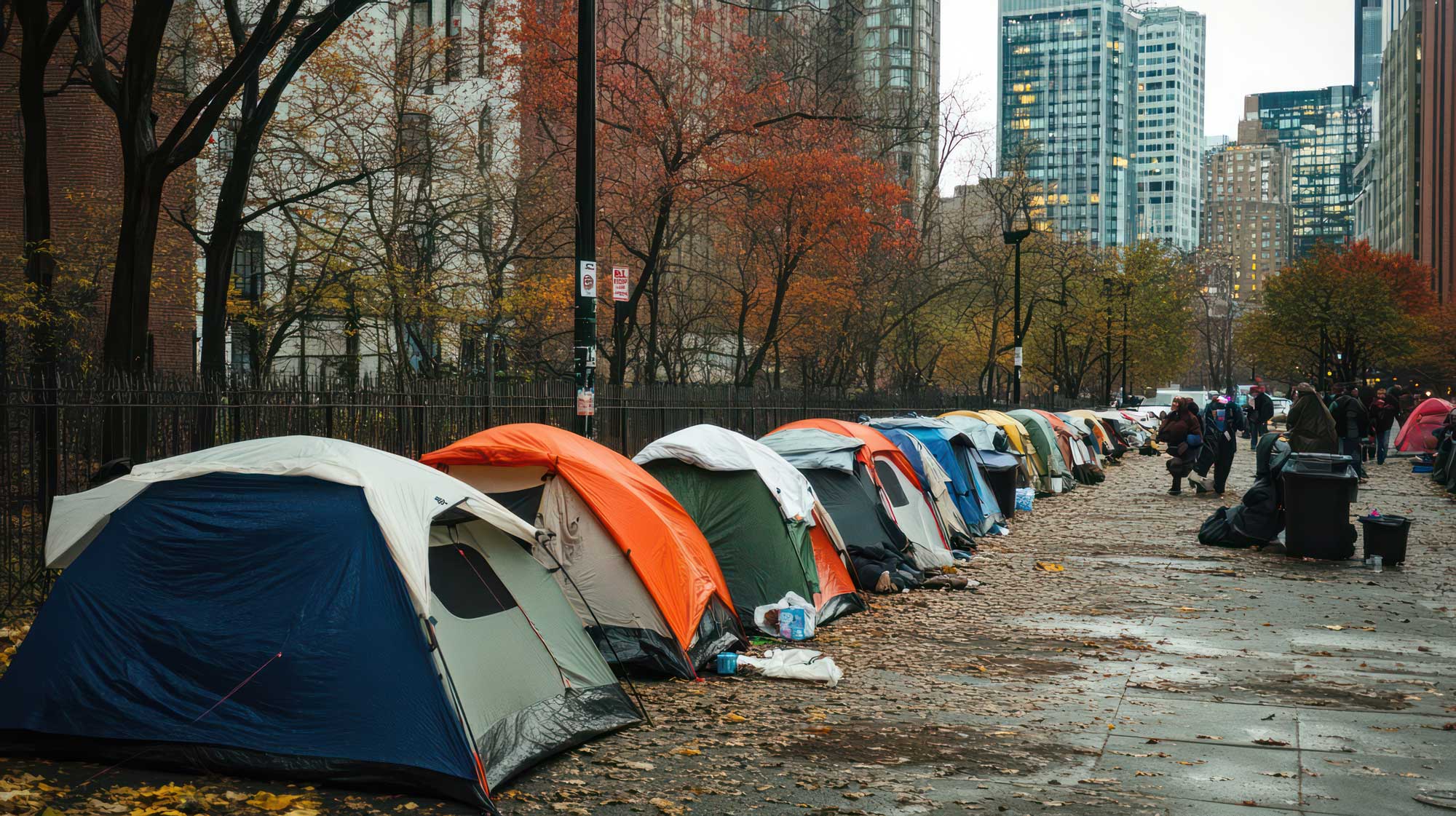
Restoring Accountability and Compassion in Homelessness Policy
Recent criticisms of President Trump’s July 24 executive order (EO) on homelessness miss a critical truth: the policies of the last two decades, anchored in “Housing First” ideology and permissive approaches to public disorder, have failed. The executive order is not about punishing people, but about restoring accountability, strengthening treatment, and giving states and cities the flexibility they need to address one of the most costly and visible crises of our time.
What Really Got Her Off the Street
A recent piece in the Kansas Reflector cites the moving story of Christine English-Baird, a woman who was once homeless, and whose compassion for homeless people now fuels her outreach. But her own story undermines the claim that current federal programs work. English-Baird did not escape homelessness because of Housing First or a government-funded initiative. She turned her life around because “a friend in Kansas … put her up so she could recover from substance use, build savings and regain hope.” That is not the product of decades of federal policy but rather of private compassion. The executive order does not prohibit friends from helping friends, nor does it weaken the networks of faith, family, and community that have always been central to recovery.
A Return to Sanity, Not Stigma
In the article, a Kansas behavioral health executive warned that the order moves things “back 35–40 years.” This would bring the U.S. back to a time before it spent tens of billions of dollars annually on subsidized housing programs that have failed to reduce the number of people on the street. It was before the wave of cheap, potent, psychosis-inducing drugs—methamphetamine, fentanyl, and synthetic opioids—flooded communities. In the 1980s, those needing assistance were expected to take steps toward sobriety, employment, and stability. They were not allowed to pitch a tent anywhere they chose. The result? Fewer needles in public parks, fewer addicts breaking into homes and businesses, and less visible disorder. That is not the regression the author would like you to believe; it is a return to accountability.
Progress That Cannot Be Defined
Service providers quoted in the article warn about “decades of progress” being unraveled—yet they never define what that progress is. If progress means more taxpayer-funded housing vouchers without reductions in street homelessness. In that case, more untreated mental illness and addiction left to fester, and more bureaucracy sustaining jobs in nonprofit organizations producing poor outcomes, then yes, this order challenges that definition. If there is measurable, positive progress attributable to the current system, advocates should highlight it. They don’t because they can’t. The data speaks for itself: despite billions annually in federal spending, unsheltered homelessness has risen by roughly 30 percent from 2015 to 2020.1 If that is success, what would failure look like?
Where Will People Go?
Critics ask, “Where will people go?” as though the executive order itself must build facilities, camps, and treatment centers. But that is a question for states, not the federal government. The President has led where he can: redirecting federal funds, removing bureaucratic barriers like the Housing First mandate, and encouraging treatment, order, and accountability. It is now up to states and cities to seize the opportunity this order creates. They must build safe, sanctioned camping areas, expand psychiatric facilities, and increase rehabilitation programs.
Making every homeless person a federal responsibility is precisely a recipe for dysfunction, as we have seen over the last two decades. The federal role is not to micromanage, but to stop subsidizing failure and reward results. This executive order reverses that mistake by empowering states to innovate.
Treatment Over Abandonment
Opponents warn that expanding criteria for involuntary treatment is a return to punitive institutionalization. In reality, many of the most vulnerable are already institutionalized, either in jails or cycling through ER wards. Leaving someone with untreated schizophrenia to deteriorate on a sidewalk, or an addict to overdose repeatedly in public, is not compassion–it is neglect. The EO’s call for expanded treatment beds and assisted outpatient programs recognizes that sometimes intervention is the most humane course of action.
A Necessary Course Correction
Christine English-Baird’s journey demonstrates that recovery is possible, but also that it does not happen through government programs. In her case, it was personal responsibility, sobriety, and the help of a friend. That lesson should guide us. The President’s order is not about turning back the clock; it is about turning the page on decades of ineffective policy. For too long, ideology has dominated federal homelessness strategies. Housing First, despite good intentions, has failed. The executive order acknowledges reality: untreated mental illness and addiction drive homelessness, permissive policies erode public trust, and accountability must be restored. The path forward is not criminalization, nor is it the status quo of managed, taxpayer-funded decline. It is a pragmatic blend of treatment, responsibility, safety, and compassion. That is precisely what the executive order envisions.

Stay Informed
Sign up to receive updates about our fight for policies at the state level that restore liberty through transparency and accountability in American governance.
